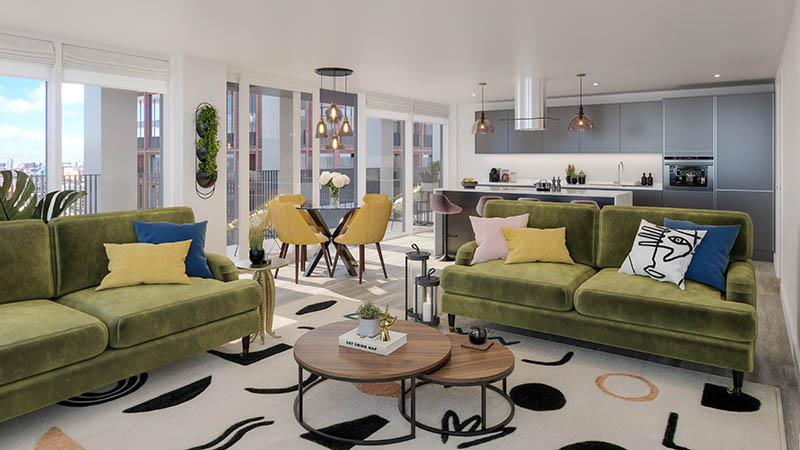A Guide To Growing Shares In A Shared Ownership Property
Amy Gooder, Yorkshire regional sales manager for Guinness Homes, takes us through ‘staircasing’, the term for purchasing further shares in your Shared Ownership home.
Buying a home is undoubtedly one of the biggest milestones in many people’s lives, but between the cost-of-living crisis, the ever-temperamental property market, fluctuating interest rates and record-high inflation, homeownership could now feel out of reach for many. However, one option that is continuing to help buyers get on to the property ladder is Shared Ownership: a unique approach to buying property that is designed to help individuals of all budgets own their own home.
At the initial sale, buyers purchase a starting percentage of the Shared Ownership property, typically between 25% and 50%. Alongside their mortgage repayments, buyers then pay a monthly rent back to the developer to cover the unpaid shares, typically set at 2.75%. Whilst paying a mortgage and rent may seem daunting, it is important to remember that mortgage costs for Shared Ownership homes are typically much less than for a traditional purchase, as they will only be for a share of the property, rather than the whole sale price. However, what happens should a buyer wish to increase the percentage of the property that they own?
One of the main benefits of Shared Ownership is the option to increase shares in a property over time, in a model known as ‘staircasing’. Buyers can purchase additional shares in their property after a period of time outlined in the leasehold agreement, increasing their ownership stake in the property and simultaneously reducing the monthly rent to the developer. With the purpose of Shared Ownership being to provide homes to those who couldn’t otherwise buy on the open market, staircasing allows buyers to increase their shares in the property in line with their financial situation; something that would not be possible in a traditionally purchased property.
When a shared property owner decides that they are ready to purchase the next increment of shares, the property must first be valued by a Royal Institution of Chartered Surveyors (RICS) registered surveyor to find the current value. Percentage shares are calculated in line with the current market value, rather than the value of the shares originally purchased, and must be bought within three months of the valuation taking place. With this in mind, buyers may choose to wait until there is a downturn in the property market, as this could be a chance to purchase a bulk of shares at a lower than usual price.
 Points Cross, Guinness Homes
Points Cross, Guinness Homes
Whilst there are many benefits to staircasing, including relatively short timescales to complete and the absence of the requirement to conduct a further survey since the property is already in the hands of its owner, there are some extra costs to consider. As with any property purchase, a solicitor must be instructed to act for the buyer, which will incur additional legal costs. For purchases over 5%, the developer may also charge a fee per share increase – this is subject to the developer, but could be anywhere between £150 and £500, depending on what is agreed in the lease.
Typically, buyers tend to increase their shares in a property after two to three years, with many developers seeing an increasing number of people reaching 100% ownership status. Additionally, owners of Shared Ownership houses, rather than apartments, who choose to staircase to 100% can sometimes become the freeholders of the property, dependent on the lease.
However, putting a timeframe on how fast 100% ownership can be reached for both apartments and houses can be difficult, as buyers increase shares as and when it works with their affordability. Equally, these increases can start from as low as 1% if the property was bought after 2021, demonstrating that there are no hard or fast rules as to how quickly an owner should staircase or by how much. Whilst 1% increases may work for some and do increase accessibility, the additional costs attached can make these minor increases less economically viable than saving up to increase with a larger share purchase at one time.
With the market fluctuating and personal finances strained, many tenants in the private rental sector may fear their landlords could sell the property to raise capital. However, despite the monthly rent attached to Shared Ownership properties, owners can rest easy knowing that the home is theirs and that they can choose to increase shares as and when they wish, with no pressure to do so if they are not yet ready and no risk of facing an eviction notice.
Despite its introduction in the 1980s, Shared Ownership is still gaining traction as one of the most inclusive forms of homebuying, helping those who wouldn’t otherwise be able to get a foot on the property ladder. With staircasing providing the stepping stones to 100% ownership of a property, Shared Ownership is changing the way people approach buying a home and putting financial control firmly in the hands of the buyer.